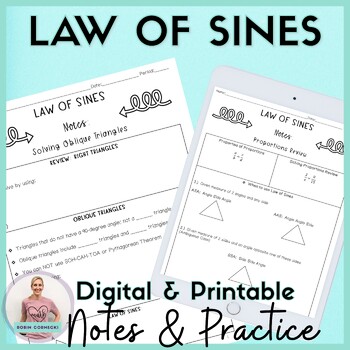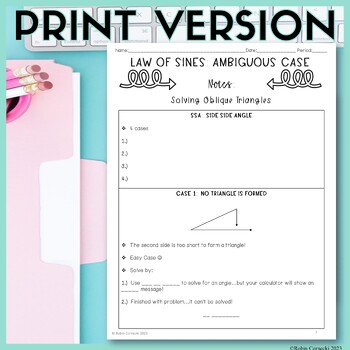Law of Sines Guided Notes Practice Homework Pre Calculus Worksheets
- Zip
- Google Apps™
- Microsoft OneDrive

Description
Law of Sines Guided Notes is everything you need to teach your students about the Law of Sines. Students will solve for missing sides and angles in ASA: Angle Side Angle, AAS: Angle Angle Side, and SSA: Side Side Angle oblique triangles. These guided notes and practice worksheets are perfect for a binder or can be reduced in size to fit into an interactive notebook.
✅This resource is perfect for Distance Learning (zero prep) or in the classroom. It can be used with Google™ or Microsoft™. You will receive a PDF with the printables, a link to the Google slides, a PowerPoint version, and an answer key.
➡️This resource is non-editable
You must have a free Google™ account to access the Google™ slides.
⭐ These worksheets can be used digitally or in person with the provided PDF handouts included.⭐
✅ 20 pages plus answer keys of notes and practice problems
✅ Plenty of room for your students to write down their answers and show their work!
You may also like:
Related Products
⭐ Law of Cosines Digital Activity
⭐ Law of Sines Digital Activity
Don't forget to leave a review to earn credit toward future resources at no extra cost!
Let's be social!





